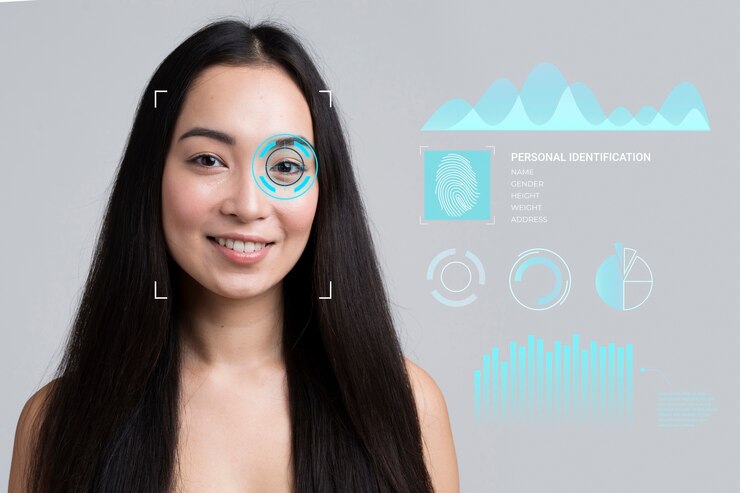The content of biometrics consists of unique physical or behavioral characteristics of an individual, such as fingerprints, facial features, or voice patterns. Biometric data is used for identification and authentication purposes in various systems and applications.
Biometric technology is becoming increasingly prevalent in everyday life, from unlocking smartphones to airport security screenings. It offers a highly secure and convenient method for verifying a person’s identity. With advancements in biometric systems, concerns related to privacy and data security have also gained attention.
As the use of biometrics continues to expand, it is crucial to understand its content and implications in the modern digital age. We will delve into the details of biometric data, its applications, and the associated ethical and legal considerations.

Understanding Biometrics
Biometrics refers to the measurement and analysis of unique physical or behavioral characteristics, such as fingerprints, facial patterns, or voice recognition, for authentication and identification purposes. It serves as a powerful tool in enhancing security and streamlining processes across various industries.
Definition And Purpose
Biometrics involves the use of inherent bodily characteristics or behavioral traits to authenticate individuals. Its primary purpose is to provide secure access to physical and digital assets, replacing traditional means of authentication, such as passwords or identification cards. Moreover, biometric technology aims to reduce fraud, enhance convenience, and improve overall security measures.
Evolution Of Biometrics
Over the years, the evolution of biometrics has transitioned from basic fingerprint scanning to advanced biometric systems that incorporate facial recognition, iris scanning, and voice authentication. This progression has significantly expanded the applicability of biometrics, enabling its integration into various sectors, including banking, healthcare, government, and consumer electronics.
Types Of Biometric Data
When it comes to biometric data, there are various types of biometric information that can be used for identification and authentication. These types of biometric data are essential for different biometric systems and play a crucial role in ensuring security and accuracy.
Facial Recognition
Facial recognition is a type of biometric data that involves analyzing the unique features of a person’s face for identification purposes. It utilizes sophisticated algorithms to map and measure various facial features, such as the distance between eyes, nose width, and jawline shape, creating a unique facial signature for each individual.
Fingerprint Identification
Fingerprint identification is one of the oldest and most widely used biometric data types. It involves capturing and analyzing the unique patterns, ridges, and minutiae points present in an individual’s fingerprints. These patterns are then converted into a digital template for comparison and authentication purposes.
Iris Scanning
Iris scanning is a biometric data type that involves capturing high-resolution images of the unique patterns present in an individual’s iris. The intricate patterns of the iris are then used for identification purposes, as they are highly distinct and virtually impossible to replicate, making iris scanning a highly secure form of biometric identification.
Biometrics Usage
Biometrics usage has rapidly expanded across various industries and sectors due to its unparalleled ability to enhance security, streamline processes, and provide a seamless user experience. The deployment of biometrics technology has brought about a revolution in multiple areas, including security and access control, law enforcement, and the integration of biometric features into mobile devices.
Security And Access Control
Biometrics is extensively utilized in security and access control systems for a diverse range of applications. From fingerprint scanners and facial recognition technology to iris and voice recognition, biometrics offers unparalleled accuracy and reliability in identifying individuals and granting them access to secure facilities, high-value assets, and sensitive information. By leveraging biometric data, organizations can significantly bolster their security measures, minimize the risk of unauthorized access, and ensure the integrity of their physical and digital assets.
Law Enforcement
In the realm of law enforcement, biometrics has emerged as a potent tool for crime prevention, investigation, and identification of suspects. Police departments and investigative agencies harness biometric technology to match fingerprints, analyze DNA samples, and conduct facial recognition searches, thereby aiding in the swift resolution of criminal cases and the apprehension of perpetrators. The integration of biometrics in law enforcement processes has played a pivotal role in enhancing public safety and reinforcing the efficacy of crime-fighting initiatives.
Mobile Devices
The integration of biometric features in mobile devices has redefined the landscape of user authentication and data security. Smartphones and tablets now come equipped with fingerprint sensors, facial recognition capabilities, and iris scanners, offering consumers a seamless and secure means of unlocking their devices, authorizing transactions, and safeguarding sensitive information. Biometric authentication on mobile devices not only enhances user convenience but also augments the robustness of data protection measures in an increasingly digital-centric world.
Protecting Biometric Data
Protecting biometric data is crucial to maintaining the privacy and security of individuals. As biometric technology becomes more prevalent in various industries, it is essential to address privacy concerns and implement robust data security measures to safeguard this sensitive information.
Privacy Concerns
Biometric data, such as fingerprints, facial recognition, and retinal scans, are deeply personal and unique to each individual. As a result, there are legitimate privacy concerns regarding the collection, storage, and use of this data. Individuals want assurance that their biometric data is being handled with care and respect for their privacy.
Data Security Measures
Implementing strong data security measures is imperative to ensure the protection of biometric data. This includes encryption, access control, and secure storage protocols to prevent unauthorized access and potential misuse of biometric information. Organizations must prioritize the integrity and confidentiality of biometric data to instill trust and confidence in their systems.

Credit: incode.com
Frequently Asked Questions For What Is The Content Of Biometrics?
What’s Included In Biometrics?
Biometrics includes unique physical characteristics like fingerprints and facial recognition for identification and authentication. It is used for security and access control in various applications.
What Does Biometric Information Include?
Biometric information includes unique physical or behavioral characteristics used for identification, such as fingerprints, facial recognition, iris scans, and voice patterns.
What Is The Main Purpose Of Biometrics?
The main purpose of biometrics is to accurately identify and authenticate individuals based on their unique physical and behavioral characteristics.
What Are The 4 Main Types Of Biometrics?
The four main types of biometrics are fingerprint recognition, facial recognition, iris recognition, and voice recognition. These technologies are used to identify individuals based on their unique biological characteristics.
Conclusion
Biometrics technology holds the potential to revolutionize security and authentication processes. By analyzing unique physical and behavioral characteristics, biometric systems offer an unprecedented level of accuracy and reliability. As businesses and organizations continue to seek enhanced security measures, the use of biometrics is poised to become increasingly prevalent in a wide range of applications.

